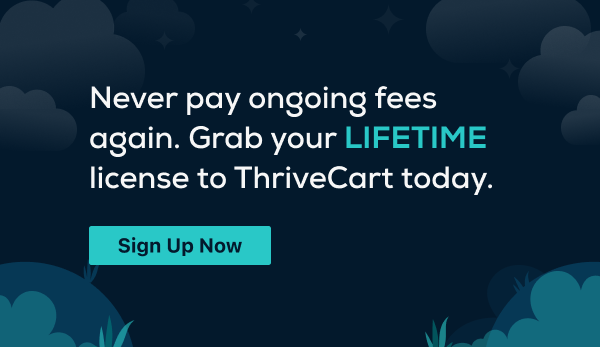For years online sellers have been using affiliate marketing programs to garner referral sales for their e-commerce websites. However, in today’s age of social media and influencer marketing, focus on affiliate sales is more popular than ever. In fact, a Rakuten/Forrester Research survey showed that 90% of merchants and advertisers say that they considered affiliate marketing an essential part of their marketing strategy. Furthermore, 31% of publishers consider affiliate marketing to be one of their top 3 sources of revenue, according to eMarketer.
Today, we’ll look at a step-by-step plan for business owners to launch their own affiliate program, including product selection, goal setting, affiliate onboarding, affiliate search engine optimization (SEO), and selecting an affiliate management tool.
What is an Affiliate Marketing Program?
An affiliate marketing program is an online marketing strategy where a company rewards affiliate partners for each new customer or new purchase brought in by the partner’s marketing efforts. As a result, the affiliate earns a commission or percentage of the sale made, and the company benefits from increased exposure and sales. It’s often a win-win partnership wherein the affiliate generates passive income while the parent company gains increased brand awareness and conversions.
In affiliate marketing, companies provide affiliates with a unique tracking link or code to include in their individual marketing efforts, such as on their website, in email newsletters, or through social media posts. When a customer clicks on the affiliate’s link or uses their discount code during purchases, the affiliate earns a commission.
The largest affiliate program currently running is the Amazon Associates program. In this program, the affiliate partner can create a marketing campaign around almost any item directly available for sale from Amazon. For example, an Instagram influencer might talk about their favorite hair products and direct followers to an Amazon affiliate link to purchase. If any of their followers make a purchase, the influencer will receive a percentage of the sale.
Benefits of Running an Affiliate Program
For many businesses, investing in an affiliate program can lead to several recurring benefits. Let’s take a look at them here.

Increase Brand Awareness
Brand awareness is the extent to which a target audience is familiar with and recognizes a particular brand. It is an important measure of a brand’s visibility and reputation. Increasing brand awareness is one of the biggest benefits of an affiliate program, as affiliate marketing can extend a brand’s reach to a wider audience through the affiliate’s network and audience. Affiliates promote the brand to their followers, subscribers, and visitors, which can increase the brand’s visibility and reach. Also, sentiment towards a brand may be strengthened via an endorsement by an influencer who is sharing an affiliate link.
Track Sales
Effective affiliate tracking will measure conversion rates and where sales are coming from. Using the right tools, marketing teams and small business owners alike can build strategies to grow traffic and revenue from specific affiliate campaigns and retire campaigns that are ineffective. This allows businesses to double down on successful marketing strategies while rewarding and encouraging affiliates who provide high quality referrals.
Increase Customer Traffic
Affiliate marketing is particularly helpful for online businesses that are looking to grow their online traffic because it allows them to leverage the audience and reach of an established affiliate to promote their products or services. This can help to increase their visibility and reach among potential customers who may not have heard of the business otherwise, without the expense of costly marketing and advertising campaigns or sales staff salaries.
Low Risk, High Results
Because the actual promotion efforts involved in affiliate marketing are the responsibility of the affiliate partner, the entire program is generally pretty low risk for the business offering it. After creating the affiliate program and providing some structure for what products should be highlighted, how referrals are tracked, and how commissions are earned, parent companies can begin to focus on other marketing tactics while their affiliates generate new leads, new customers, and new subscriptions.
7 Steps to Create a Successful Affiliate Program
When building and launching your affiliate strategy, there are 7 key steps that you must dedicate your attention to.

1. Select One or More Products
The very first step to creating an affiliate program is choosing which products will be part of the affiliate marketing strategy. Even if your management software allows every item on your online store to be part of affiliate rewards, you will want to center your campaigns around a limited product or product category.
Some considerations for choosing products are:
- Profitability – Do you have enough margin available to make a decent profit and pay an affiliate commission?
- Product Demand – Research the demand for the products you are considering promoting. Products with high demand are more likely to sell well and generate revenue.
- Uniqueness – Is your product rare, one of a kind, or something that can’t be found easily on convenient shopping websites like Amazon? Or, is there a reason why shoppers will purchase directly from you instead, such as added support or third-party endorsement?
2. Set Goals
There are a number of simple goals you should set in advance of your affiliate program launch. Consider developing a dashboard or accessing data from an affiliate management system that can help you track the following measurements:
- Total revenue increase
- Average order value per affiliate partner
- Website traffic and landing page visits
- New leads (ex. email list signups)
- Social media engagement on branded accounts
- Affiliate network growth
Tracking these KPIs will help illustrate your program’s growth and overall value over time. Checking them on a regular basis can help your team improve the marketing tools, templates, and tutorials that are provided to your affiliate partners.
3. Decide Pricing and Commission Rates
You will need to determine which commission structure to follow, then make sure product pricing can cover this structure while maintaining profitability. One way to establish a competitive commission rate is by analyzing the competition and how they are implementing their affiliate marketing strategies (if they have one!).

Regardless of your competitors, however, you should be aware of popular commission structures, such as:
- Base rate commission: The affiliate earns a fixed amount for each sale or conversion they generate, regardless of the order value. For example, an affiliate may earn a base rate commission of $10 per sale.
- Percentage commission: The affiliate earns a percentage of the sale value for each purchase made through their referral link. For example, an affiliate may earn a 10% commission on all sales generated through their link, so if a customer purchases a $100 product, the affiliate earns $10.
- Flat rate commission: The affiliate earns a fixed amount of commission for each sale, but the amount may vary based on the order value. For example, an affiliate may earn a $5 commission for orders under $50, and a $10 commission for orders over $50.
- Commission per lead: The affiliate earns a commission for each lead they refer to the company, regardless of whether the lead converts into a sale. This is typically measured online through the completion of a lead form.
Many web stores will set different commission rates or structures based on different product types and categories. For example, participants in the Amazon Associates program receive a different commission percentage for book purchases versus other product types. They also offer base-rate commissions on certain products such as affiliates who refer Amazon Prime memberships or Audible book subscriptions.
4. Launch Your Program With an Affiliate Management Tool
Choosing the right tool to track the affiliate referral program is critical to your strategy. There are several affiliate management apps and tools available; many of which can work with your WordPress website via the use of plugins or Zapier integrations.
ThriveCart is a great example of an affiliate management solution. Setting up your affiliate program with ThriveCart is easy. You can set up specific products for your partners to promote; create a simple affiliate registration system; distribute affiliate codes and URLs; track commissions earned for each affiliate; and even effortlessly pay your affiliates through your and your partners’ connected PayPal accounts.
ThriveCart is the only solution that provides a lifetime license structure in the affiliate sphere without charging a commission on ongoing sales.
5. Provide Quality Content & Creative Elements
With affiliate campaigns, you are relying on affiliate partners to promote your brand and products. To do that, you will need to provide them with high-quality creative assets that allow your partners to promote your products in their voice, while following your brand guidelines.
In the early days of affiliate marketing, marketers provided their partners with various banner ads and preformatted text links to fit in their boxy website designs. Today, content creators appreciate individual elements that can be used throughout their posts, such as marketing campaign-ready logos, product photos, and other assets ready to build into blogs, Instagram reels, Facebook ads, etc. Using ThriveCart, you can provide affiliate resources such as swipe copy, banners, videos, and custom HTML that your partners can access directly from their affiliate dashboard.
6. Select Ideal-Fit Affiliates to Work With
At this stage, you can find the right affiliates for your brand and target audience, and share your affiliate program with them as a partnership opportunity. When recruiting affiliates or narrowing down a growing affiliate pool, it’s helpful to focus on the following areas:
- Affiliate partners with a relevant target audience to the company’s products or services are more likely to generate sales or leads. For example, if a company sells beauty products, partnering with beauty bloggers or influencers with relevant audiences will increase the chances of conversions.
- Affiliates with high-quality content on their websites, blogs, email marketing, and social media accounts can help build credibility for the company’s products or services. A well-written and informative review or product recommendation from a trustworthy affiliate partner can be a powerful tool to drive conversions.
- Affiliates who actively promote your company’s products or services and have a strong presence on social media or other digital marketing platforms can help increase brand exposure and drive more traffic to your website or landing pages.
- Establishing long-term partnerships with potential affiliate partners who share the company’s values and vision can be mutually beneficial. Consider offering incentives and/or rewards for top-performing affiliates, which can encourage them to continue promoting the company’s products or services and contribute to the program’s success.
7. Monitor Your Results and Adjust for Performance
At this point, your affiliate program is live, and you should have a selection of affiliate partners who are actively promoting your products and bringing in new sales.
Now’s the time to regularly monitor the goals and KPIs you’d previously set, taking notice of partners who stand out for high performance. Take note of which products they’re promoting, on which platforms, to which audience, and what media they use—then enable the rest of your affiliates with this information. Helping your affiliates succeed will only help your brand succeed as well.
How to Manage Your Affiliate Program
Paying attention to the details when initially building your affiliate program can pay off in the long run, resulting in an efficient program that benefits both your brand and your partners.
Using an affiliate management tool to launch, manage, and scale your program over time makes the whole process even easier. ThriveCart’s built-in affiliate platform allows you to do all the steps above easily and intuitively with little ongoing maintenance. The system automates onboarding new affiliates, affiliate payouts, sharing branding content, and general communication with your affiliate partners.
Managing your affiliate program can initially seem daunting, but setting a firm foundation from the start and using a fully integrated platform like ThriveCart makes things simple. Get a lifetime account today and start growing a network of partners who promote your products and brand for you.





